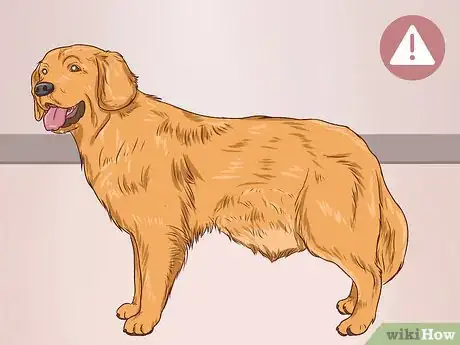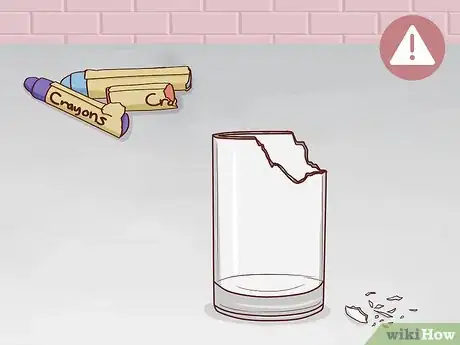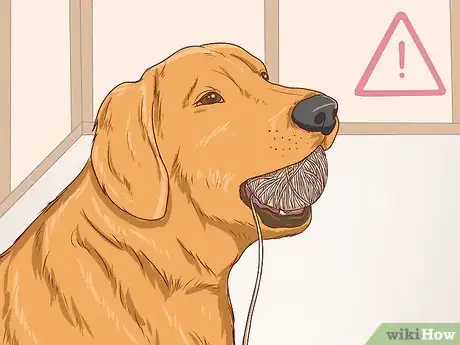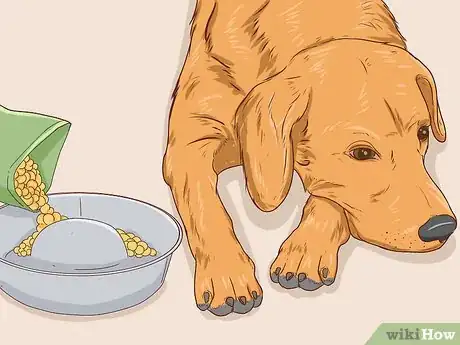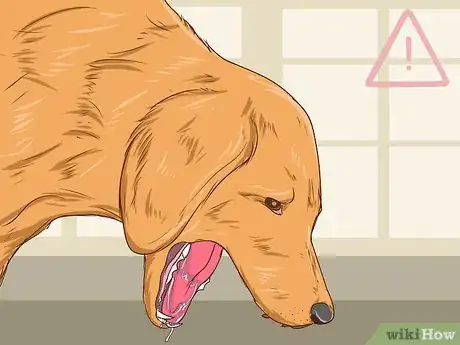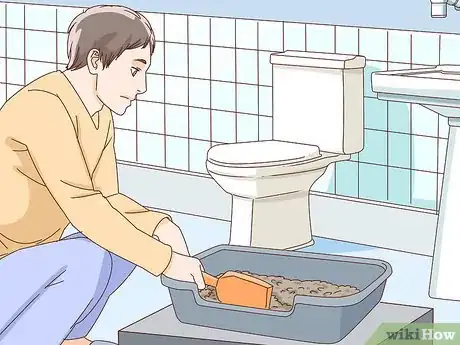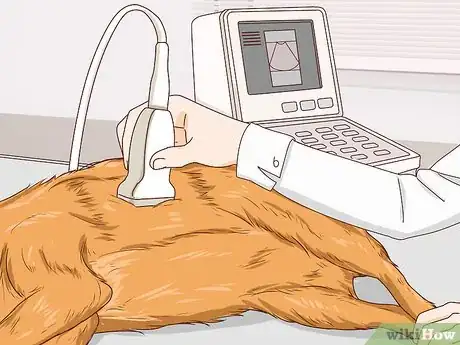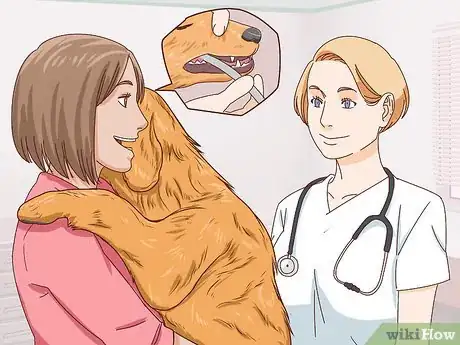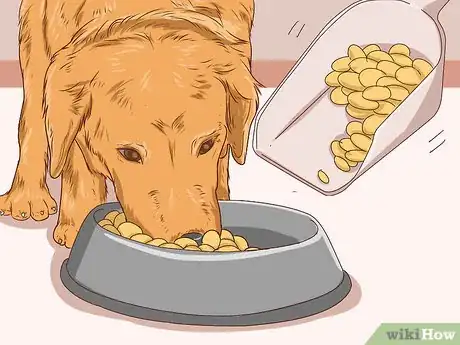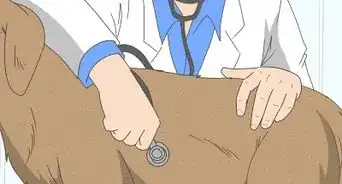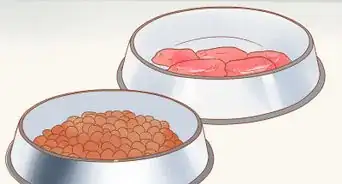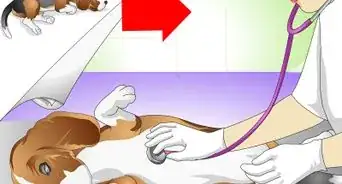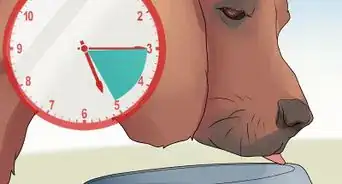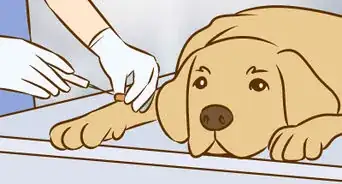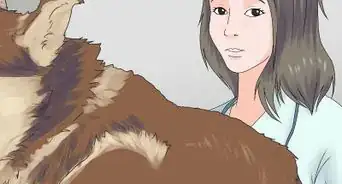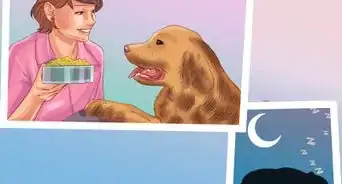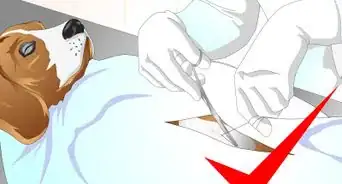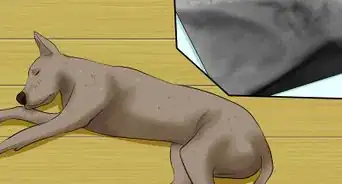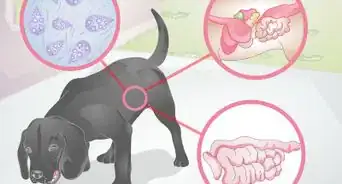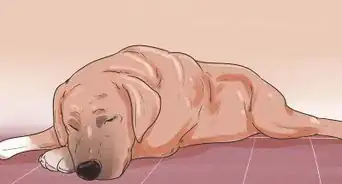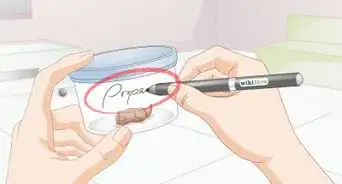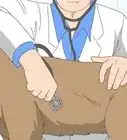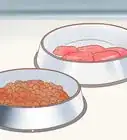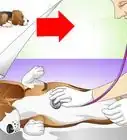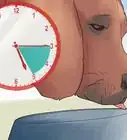This article was co-authored by Deanne Pawlisch, CVT, MA. Deanne Pawlisch is a Certified Veterinary Technician, who does corporate training for veterinary practices and has taught at the NAVTA-approved Veterinary Assistant Program at the Harper College in Illinois and in 2011 was elected to the board of the Veterinary Emergency and Critical Care Foundation. Deanne has been a Board Member of the Veterinary Emergency and Critical Care Foundation in San Antonio, Texas since 2011. She holds a BS in Anthropology from Loyola University and an MA in Anthropology from Northern Illinois University.
This article has been viewed 201,003 times.
If your dog ingests something it shouldn't, that item can block its digestive system. In some cases, you can help your dog pass the obstruction naturally. However, there are cases when a gastrointestinal blockage needs to be removed by a veterinarian. As a dog owner, you need to decide whether you can help your dog pass an obstruction or whether you need to get it veterinary care. With your support, some potential obstructions can move through your dog's body without harming the animal and without intervention from a veterinarian. However, taking your dog to the vet as soon as you realize it swallowed something it shouldn't will create the best outcome for your pet.
Steps
Deciding Whether to Give Home Treatment
-
1Check your dog for common symptoms of a blockage. If your dog has eaten something it shouldn't but it seems generally healthy otherwise, then you may elect to treat the possible obstruction at home. However, if your dog is acting ill, then it requires more immediate treatment. Some symptoms that indicate that your dog needs immediate veterinary treatment include:[1]
- Vomiting.
- Weakness.
- Diarrhea.
- Loss of appetite.
- Signs of pain.
- Dehydration.
- Bloating
-
2Decide whether it's even possible for the dog to pass the obstruction. If your dog eats something that it shouldn't, on rare occasions the animal may be able to pass it through its gastrointestinal system without trouble. However, there are items that cannot physically pass through a dog's digestive system because they are simply too big, too rough, or too dangerous to remain in your dog. It's best to have your dog evaluated by a vet, who can determine if the dog needs surgery.
- Items such as small pieces of crayon or paper can typically pass through a dog's digestive system without issue.
- If your dog eats a rough or sharp item, such as glass, you should get it veterinary care immediately.
- You won't always know what your dog has eaten when it has a bowel obstruction. However, if you do know then you have the ability to assess the situation more clearly.
-
3Think about additional risks. A full blockage is not the only risk to your dog's health when it eats something it shouldn't. For example, items that are not food can also pose a poisoning risk and the risk of internal injuries.
- For example, if your dog eats string, that string can cut into the intestines while it is moved around by the muscle contractions in the gut.
Giving at Home Treatment
-
1Monitor your dog's vital signs. If you are committed to letting your dog pass an obstruction naturally, then you need to be vigilant about watching the animal's health and vital signs. Monitor the dog's breathing, heart beat, appetite, bathroom schedule, and general demeanor. If any of these aspects changes for the worse, you should have your dog seen by a veterinarian immediately.
- An obstructed digestive system can be a life-threatening condition. If you suspect that your dog is not passing the obstruction and its condition is not improving quickly, then you should get the animal veterinary treatment.
- If your dog is not eating due to the obstruction, is vomiting, or is lethargic, you should get your pet immediate veterinary care.
-
2Watch for vomiting. If your dog eats something that it shouldn't, the animal may vomit it up. Large objects can sit in the stomach for a long time and then eventually the dog will expel them with no detrimental side effects on the animal's health.[2]
- Vomiting itself is a symptom of a wide variety of health problems in pets. If your dog has vomited this in and of itself is not a sign that your pet has a gastrointestinal blockage.
-
3Look for evidence that the obstruction has passed through the dog's system. If you are sure that your dog has ingested something it shouldn't have, be on the lookout for the evidence that it has passed out of the animal's body. Look at your dog's stool every time it goes to the bathroom in order to spot the item in question.
- Items that your dog eats can sit in its body for a long time or can be expelled quickly. The amount of time it will take to pass a potential obstructing object can vary.
Getting Veterinary Treatment
-
1Take your dog to the vet. If your dog is acting unwell and you think that it has eaten something that is obstructing its digestive system, it's a good idea to have the animal seen by a vet. The vet can do an x-ray, ultrasound, or endoscopy to assess whether there is indeed an obstruction in your dog's system.[3]
- An endoscopy is a procedure in which the vet puts a camera down the dog's throat and into its digestive tract to look for an obstruction.
- With an endoscopy, your vet may also be able to remove a small obstruction with tools connected to the scope.
-
2Discuss treatment options. If your dog does have an obstruction and it is making the animal ill, then immediate veterinary treatment is necessary. Talk to the vet about the treatment options open to you, which usually include endoscopic and/or traditional surgical removal.[4]
- Your veterinarian will also need to give your dog fluids and medications to stabilize its system before operating.
-
3Give post-treatment care. After your dog has surgery it will need special care at home. This care typically includes tending to the incision site, feeding an adjusted diet, and giving lots of love and attention.
- After your dog has recovered, try to stop it from eating foreign and indigestible objects in the future.
Warnings
- This is a life-threatening event for your dog. Your best option is to take the dog to the vet as soon as you know it swallowed something it shouldn't, even if it hasn't gotten sick yet. If the object block's the dog's digestive tract, it could deprive the area of blood and have tragic consequences.⧼thumbs_response⧽
- It can be expensive to have your dog get surgery for a gastrointestinal blockage. However, a blockage that the dog is unable to pass naturally can be a life-threatening problem. It is better to have your dog's condition assessed by a veterinarian and risk the cost than to allow your dog to suffer and potentially die.⧼thumbs_response⧽
References
- ↑ http://www.akc.org/content/health/articles/bowel-obstruction-in-dogs-symptoms-treatment-and-prevention/
- ↑ http://www.vetmed.wsu.edu/outreach/Pet-Health-Topics/categories/common-problems/vomiting
- ↑ https://www.petcarerx.com/article/how-to-treat-and-prevent-a-dog-bowel-obstruction/2792
- ↑ https://www.petcarerx.com/article/how-to-treat-and-prevent-a-dog-bowel-obstruction/2792
About This Article
To help your dog pass an obstruction, first note if your dog is vomiting, weak, bloated, or showing signs of pain. If this is the case, then seek veterinary care immediately as your dog may need surgery to remove the obstruction. Schedule a vet appointment if your dog ate a sharp or rough item, like glass, or something too big to pass, like a tennis ball. Otherwise, if your dog's breathing, appetite, and mood are normal, you can simply wait for it to pass the obstruction. To be sure that the obstruction has cleared your dog's system, check its vomit and stool for foreign objects. For more tips from our Veterinary co-author, including how to care for your dog if it's had surgery to remove the obstruction, keep reading.
